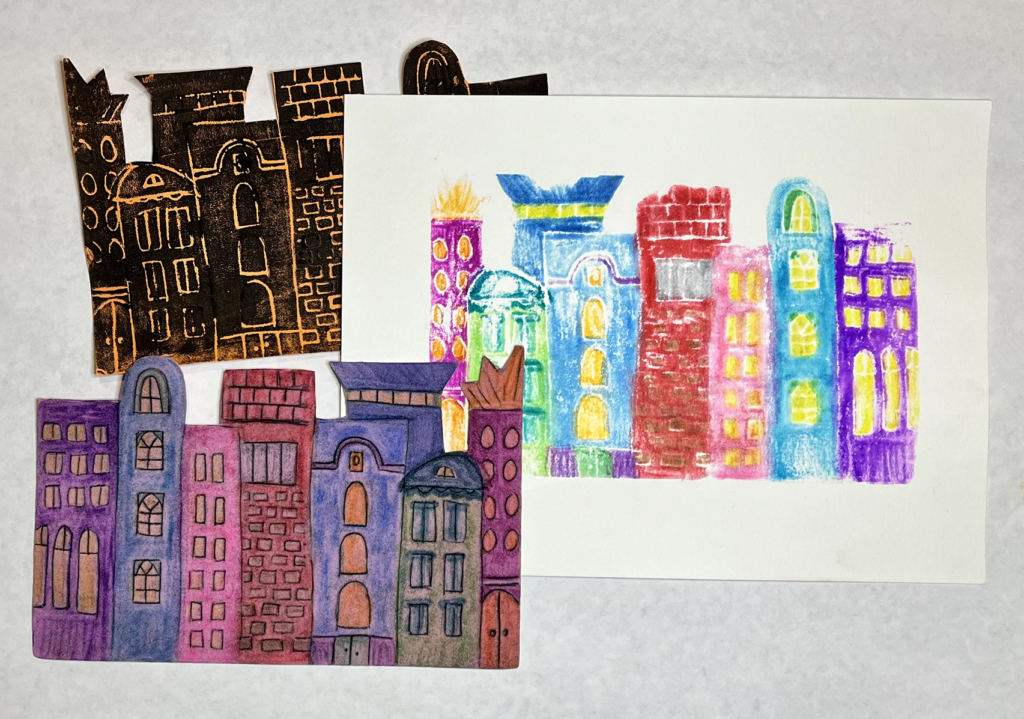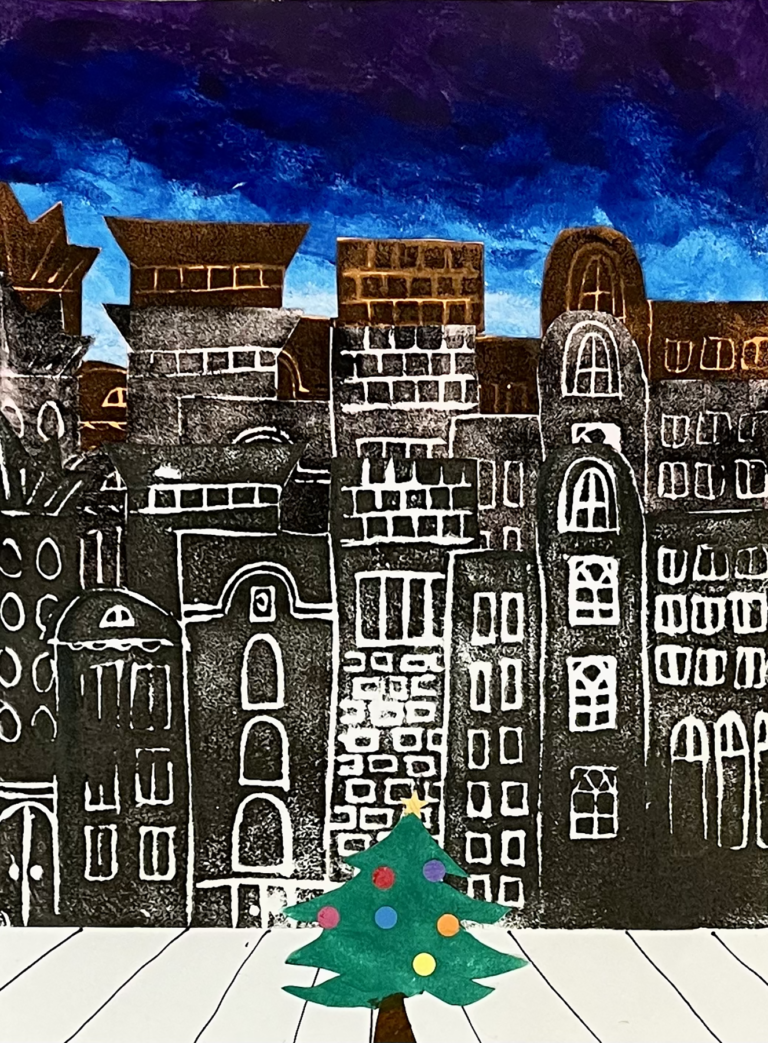
PLANNING
Printmaking has been around for centuries and has a rich and lengthy history. According to the Encylopedia Britannica, The earliest known woodblock print originated in China in 868, with an authentically dated scroll of the Diamond Sutra, found in a cave in Turkistan.
Printmaking is an artistic process in which an image, or matrix, is pressed, stamped, or transferred to onto another surface like paper or fabric to make a print, or impression. A matrix can be made from a variety of materials like wood, metal, linoleum, or concrete. My Art Enthusiasts, ages 7-9, tried their hand at printmaking this Fall. We chose foam sheets as the substrate for our images. These materials listed below are not expensive, and are safe for your tween to use at home.
Relief printing offers young artists the ability to produce multiple prints from one plate, and hours of active learning and fun.
Materials needed:
Foam sheet 8×10″
ballpoint pen
black tempura paint
3 sheets of 9×12″ colored paper
1 sheet of white paper 9×12″
Yes! Paste or Elmer’s ALL glue
12 HOURS | Intermediate/Advanced
Ages 9+
How We Did It
There are so many benefits to exploring the art of printmaking. Students develop planning skills, and the ability to produce multiple prints from one plate using a sequence of steps throughout the process. These were the steps we took:

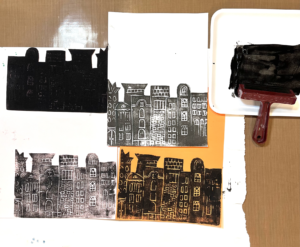
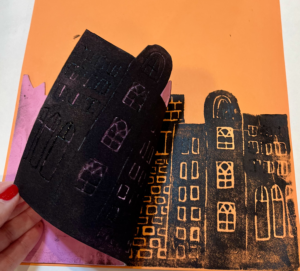
It’s important to remember that only a thin layer of paint is used on the surface of the plate to avoid paint getting ink in the valleys of the line art. Too much paint will result in blubby, sloppy prints, and will not look good. Artists need to work quickly in order to print while the paint is still wet and tacky,
4. We printed on different colored card stock, and made sure to orient the paper to match the width of the foam plate. Some chose to flip the plate over on top of the paper and press, others laid the paper on top of the plate to burnish a print. It’s important to gently rub or message the paper completely across the plate, pressing firmly and evenly to make a complete print of the entire plate with all of its’ details. (Don’t forget to rub the edges and corners of the paper.) For this part of our project, artists were instructed to choose either warm or cool colored papers for printing. We set the prints aside to dry and worked on the background papers where they were instructed to use paint sticks to paint a sky in warm or cool colors, using the opposite color family they used for their buildings.
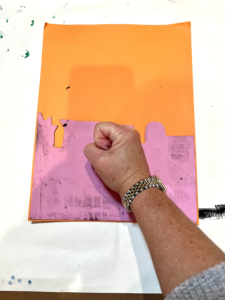



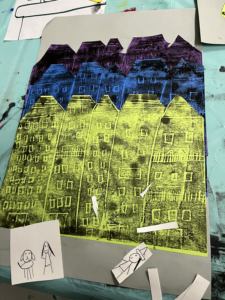

5. Once the prints were dry, my students cut out three of their best prints from the colored cardstock. They stacked the prints and glued them in place after they decided on a layout that gave them enough space at the bottom of their background paper to make a sidewalk or road.
My students did this project in October, near Halloween, and a few of them chose to add characters to the sidewalk in front of their buildings. Bicycles, trees, pets, or anything else one may see on a sidewalk in the city can be added. Note: If using painted paper, be sure to draw on the opposite side before cutting out the sketch, so the sketch lines will not show when glued into the collage.




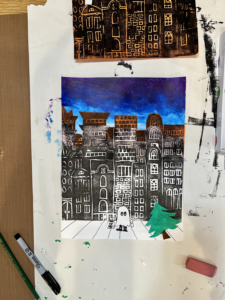

6. Once the picture has been assemble and glued into place, the printed collage is complete. Artists were allowed to keep their plates to do further printmaking at home.
However, for some families, printmaking with ink or paint at home might be too messy. If that is the case, I recommend making marker prints with the leftover printing plate. Here’s how:

